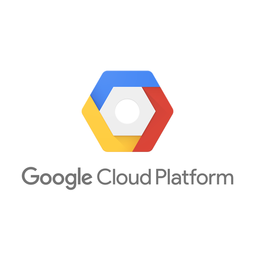下载PDF
Watchfinder clocks 1300% ROI using precision Remarketing with Google Analytics
技术
- 分析与建模 - 实时分析
适用行业
- 零售
适用功能
- 销售与市场营销
用例
- 需求计划与预测
服务
- 数据科学服务
挑战
Watchfinder 是英国一家领先的高档二手手表零售商,它面临着一个挑战,那就是如何重新吸引对其产品感兴趣但尚未购买的网站访问者。该公司发现,购买决策通常需要数周或数月的时间,只有不到 1% 的访问者在首次访问网站时完成购买。除了吸引客户返回其网站外,Watchfinder 还希望鼓励客户访问其位于伦敦皇家交易所的新实体精品店。
关于客户
Watchfinder 是英国领先的优质二手手表零售商。该公司成立于 2002 年,是一家纯在线商店,销售来自 80 多家顶级制造商的手表。如今,它的年营业额为 2500 万英镑,最近在伦敦皇家交易所开设了一家旗舰精品店。Watchfinder 网站上的平均订单价值超过 3,500 英镑,该公司发现购买决策通常需要时间,通常需要数周或数月。
解决方案
Watchfinder 的代理机构 Periscopix 建议使用 Google Analytics 进行再营销,以此作为与用户重新建立联系的解决方案。他们根据用户环境的各个方面(例如位置、语言以及他们所处的购买渠道的哪个阶段)创建了 20 个高度集中的访客列表,这些访客表现出购买意向但并未购买。现场行为有助于确定在网站上花费了一定时间或浏览了一定数量页面的用户群体。其他列表是围绕在网站上浏览过特定手表品牌的用户创建的。Google Analytics 的功能使 Periscopix 能够向这些感兴趣的关键消费者群体传达定制信息。
运营影响
数量效益
相关案例.

Case Study
Improving Production Line Efficiency with Ethernet Micro RTU Controller
Moxa was asked to provide a connectivity solution for one of the world's leading cosmetics companies. This multinational corporation, with retail presence in 130 countries, 23 global braches, and over 66,000 employees, sought to improve the efficiency of their production process by migrating from manual monitoring to an automatic productivity monitoring system. The production line was being monitored by ABB Real-TPI, a factory information system that offers data collection and analysis to improve plant efficiency. Due to software limitations, the customer needed an OPC server and a corresponding I/O solution to collect data from additional sensor devices for the Real-TPI system. The goal is to enable the factory information system to more thoroughly collect data from every corner of the production line. This will improve its ability to measure Overall Equipment Effectiveness (OEE) and translate into increased production efficiencies. System Requirements • Instant status updates while still consuming minimal bandwidth to relieve strain on limited factory networks • Interoperable with ABB Real-TPI • Small form factor appropriate for deployment where space is scarce • Remote software management and configuration to simplify operations

Case Study
How Sirqul’s IoT Platform is Crafting Carrefour’s New In-Store Experiences
Carrefour Taiwan’s goal is to be completely digital by end of 2018. Out-dated manual methods for analysis and assumptions limited Carrefour’s ability to change the customer experience and were void of real-time decision-making capabilities. Rather than relying solely on sales data, assumptions, and disparate systems, Carrefour Taiwan’s CEO led an initiative to find a connected IoT solution that could give the team the ability to make real-time changes and more informed decisions. Prior to implementing, Carrefour struggled to address their conversion rates and did not have the proper insights into the customer decision-making process nor how to make an immediate impact without losing customer confidence.

Case Study
Digital Retail Security Solutions
Sennco wanted to help its retail customers increase sales and profits by developing an innovative alarm system as opposed to conventional connected alarms that are permanently tethered to display products. These traditional security systems were cumbersome and intrusive to the customer shopping experience. Additionally, they provided no useful data or analytics.

Case Study
Ensures Cold Milk in Your Supermarket
As of 2014, AK-Centralen has over 1,500 Danish supermarkets equipped, and utilizes 16 operators, and is open 24 hours a day, 365 days a year. AK-Centralen needed the ability to monitor the cooling alarms from around the country, 24 hours a day, 365 days a year. Each and every time the door to a milk cooler or a freezer does not close properly, an alarm goes off on a computer screen in a control building in southwestern Odense. This type of alarm will go off approximately 140,000 times per year, equating to roughly 400 alarms in a 24-hour period. Should an alarm go off, then there is only a limited amount of time to act before dairy products or frozen pizza must be disposed of, and this type of waste can quickly start to cost a supermarket a great deal of money.

Case Study
Supermarket Energy Savings
The client had previously deployed a one-meter-per-store monitoring program. Given the manner in which energy consumption changes with external temperature, hour of the day, day of week and month of year, a single meter solution lacked the ability to detect the difference between a true problem and a changing store environment. Most importantly, a single meter solution could never identify root cause of energy consumption changes. This approach never reduced the number of truck-rolls or man-hours required to find and resolve issues.






